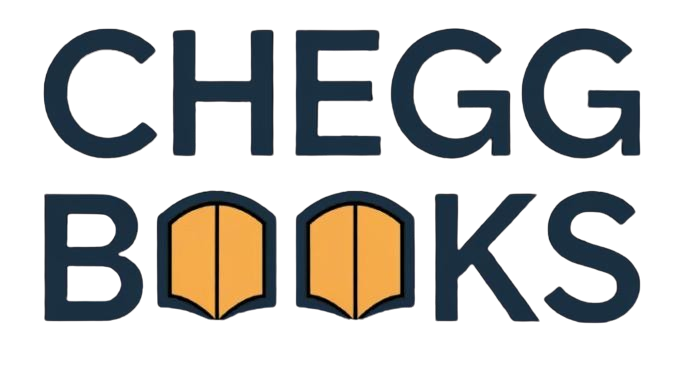![[eBook] [PDF] For Egg 1st Edition By Lizzie Stark](https://chegbooks.com/wp-content/uploads/2024/08/5-123.jpg)

EBook For Formulas and Calculations for Drilling, Production, and Workover 5th Edition By Thomas Carter, William C. Lyons, Norton J. Lapeyrouse
$165.00 Original price was: $165.00.$25.00Current price is: $25.00.
- ISBN-10 : 0323905498
- ISBN-13 : 978-0323905497
EBook For Formulas and Calculations for Drilling, Production, and Workover 5th Edition By Thomas Carter, William C. Lyons, Norton J. Lapeyrouse
Table Of Content
- Chapter 1: Basic equations
- Abstract
- 1.1: Terminology
- 1.2: Mud weight MW (lb/ft3), mud weight MW (ppg), and specific gravity (SG)
- 1.3: Hydrostatic pressure (P) and (p)
- 1.4: Pressure gradient ∇ (psi/ft), G (ppg)
- 1.5: Mud pump output q (bbl/stk) and Q (gpm)
- 1.6: Hydraulic horsepower
- 1.7: Estimated weight of drill collars in AIR
- 1.8: Open hole and tubular capacity and displacement formulas
- 1.9: Amount of cuttings drilled per foot of hole
- 1.10: Annular velocity (AV)
- 1.11: Pump output required in GPM for a desired annular velocity, ft/min
- 1.12: Bottoms-up formula
- 1.13: Pump pressure/pump stroke relationship (the Roughneck’s formula)
- 1.14: Buoyancy factor (BF)
- 1.15: Formation temperature (Tf)
- 1.16: Temperature conversion formulas
- Appendix: Supplementary material
- Appendix: Supplementary material
- Chapter 2: RIG calculations
- Abstract
- 2.1: Accumulator capacity
- 2.2: Slug calculations
- 2.3: Bulk density of cuttings using the mud balance
- 2.4: Drill string design
- 2.5: Depth of a washout in a drill pipe
- 2.6: Stuck pipe calculations
- 2.7: Calculations required for placing spotting pills in an open hole annulus
- 2.8: Line size for a low pressure system
- Appendix: Supplementary material
- Appendix: Supplementary material
- References
- Bibliography
- Chapter 3: Pressure control
- Abstract
- 3.1: Normal kill sheet
- 3.2: Pressure chart: Prepare a chart with pressure and strokes
- 3.3: Kill sheet with a tapered string
- 3.4: Kill sheet for a highly deviated well
- 3.5: Maximum anticipated surface pressure
- 3.6: Trip margin (TM)
- 3.7: Sizing the diverter line
- 3.8: Fracture gradient (FG)
- 3.9: Formation pressure tests
- 3.10: Kick tolerance (KT)
- 3.11: Kick analysis
- 3.12: Gas cut mud weight measurement calculations
- 3.13: Gas migration in a shut-in well
- 3.14: Hydrostatic pressure decrease at TD caused by formation fluid influx due to a kick
- 3.15: Maximum pressures when circulating out a kick (Moore equations)
- 3.16: Gas flow into the wellbore
- 3.17: Pressure analysis
- 3.18: Stripping/snubbing calculations
- 3.19: Subsea considerations
- 3.20: Workover operations
- 3.21: Controlling gas migration
- 3.22: Gas lubrication
- 3.23: Annular stripping procedures
- 3.24: Barite plug
- Appendix: Supplementary material
- Appendix: Supplementary material
- Bibliography
- Chapter 4: Drilling fluids
- Abstract
- 4.1: Mud density increase and volume change
- 4.2: Mud weight reduction with base liquid dilution
- 4.3: Mixing fluids of different densities
- 4.4: Oil-based mud calculations
- 4.5: Solids analysis
- 4.6: Solids fractions (barite treated muds)
- 4.7: Dilution of mud system
- 4.8: Evaluation of hydrocyclones
- 4.9: Evaluation of centrifuge
- 4.10: Mud volume required to drill 1000 ft of hole
- 4.11: Determine the downhole density of the base oil or brine in the mud at depth of interest in ppg
- Appendix: Supplementary material
- Appendix: Supplementary material
- Bibliography
- Chapter 5: Cementing calculations
- Abstract
- 5.1: Cement additive calculations
- 5.2: Water requirements
- 5.3: Field cement additive calculations
- 5.4: Weighted cement calculations
- 5.5: Calculate the number of sacks required for cement job
- 5.6: Calculations for the number of feet to be cemented
- 5.7: Setting a balanced cement plug
- 5.8: Differential hydrostatic pressure between cement in the annulus and mud inside the casing
- 5.9: Hydraulicing casing
- 5.10: Pump strokes to bump the plug
- Appendix: Supplementary material
- Appendix: Supplementary material
- Bibliography
- Chapter 6: Well hydraulics
- Abstract
- 6.1: System pressure losses
- 6.2: Equivalent circulating “density” ECD (ppg)
- 6.3: Surge and swab pressure loss
- 6.4: Equivalent spherical diameter for drilled cuttings size used in slip velocity equations
- 6.5: Slip velocity of cuttings in the annulus
- 6.6: Carrying capacity index
- 6.7: Pressure required to break circulation
- 6.8: Initial gel strength guidelines for top hole drilling in high angle wells (after Zamora)
- 6.9: Bit nozzle selection—Optimized hydraulics
- 6.10: Hydraulic analysis
- 6.11: Minimum flowrate for PDC bits
- 6.12: Critical RPM: RPM to avoid due to excessive vibration (accurate to approximately 15%)
- Appendix: Supplementary material
- Appendix: Supplementary material
- Bibliography
- Chapter 7: Drilling and completion calculations
- Abstract
- 7.1: Control drilling—Maximum drilling rate (MDR) when drilling large diameter holes (14¾ in. and larger) in ft/h
- 7.2: Mud effects on rate of penetration
- 7.3: Cuttings concentration % by volume
- 7.4: “d” Exponent and corrected “d” exponent
- 7.5: Cost per foot
- 7.6: Rig loads
- 7.7: Ton-mile (TM) calculations
- 7.8: Hydrostatic pressure decrease when pulling pipe out of the hole
- 7.9: Loss of overbalance due to falling mud level
- 7.10: Lost circulation
- 7.11: Core analysis technique
- 7.12: Temperature correction for brines
- 7.13: Tubing stretch
- 7.14: Directional drilling calculations
- 7.15: Hole washout
- Appendix: Supplementary material
- Appendix: Supplementary material
- Bibliography
- Chapter 8: Air and gas calculations
- Abstract
- 8.1: Static gas column
- 8.2: Direct circulation: Flow up the annulus (from annulus bottomhole to exit)
- 8.3: Direct circulation: Flow down the inside of the drill pipe (from the bottom of the inside of the drill string to the injection at the top of the drill string)
- 8.4: Reverse circulation: Flow up the inside of tubing string
- 8.5: Reverse circulation: Flow down the annulus
- 8.6: Reverse circulation: Adjusting for reservoir pressure
- Appendix: Supplementary material
- Appendix: Supplementary material
- Bibliography
- Appendix A
- A.1: Tank capacity determinations
- A.2: Pipe capacities, displacements, and weight calculations
- Appendix: Supplementary material
- Appendix: Supplementary material
- Appendix B: Conversion factors
- Appendix C: Average annual atmospheric conditions
- Index
Description
Formulas and Calculations for Drilling, Production, and Workover, Fifth Edition is a handy guide for engineers working with oil and gas. It explains basic equations, calculations, and examples to solve common problems like drilling fluids, pressure control, and air or gas systems.
The book gives formulas in both English and metric units, making it easy to use anywhere. It includes topics like cementing, working underwater, well hydraulics, and hydraulic fracturing. New updates include geothermal drilling, horizontal wells, and temperature workovers, helping with modern techniques.
This small but helpful guide is great for workers and managers, whether they are in the office or on-site. It saves time and money by providing clear steps to handle operations and check how wells are performing.
Instant Downloads
At Library Sources, we make it easy for you to get your eBooks and solution manuals right away. After you buy, you can download your books instantly. No waiting! Just finish your purchase, and you get a link to download your stuff right away. We have many books for all subjects, so you always find what you need. Our service helps students, teachers, and professionals get the books they need quickly and easily.
Benefits Of Buying Solution Manuals From Library Sources
Here are the benefits of buying eBooks or solution manuals from Library Sources:
- Instant Access: Get your books and manuals immediately after purchase.
- Convenience: Download your materials from anywhere, anytime.
- Wide Selection: Choose from a large variety of subjects and topics.
- No Shipping Costs: Save money by not paying for delivery.
- Environmentally Friendly: Digital books reduce paper usage.
- Searchable Text: Easily find information within the book using search functions.
- Portable: Carry your entire library on your device.
- Cost-Effective: Often cheaper than physical copies.

![[eBook] [PDF] For Formulas and Calculations for Drilling, Production, and Workover 5th Edition By Thomas Carter, William C. Lyons, Norton J. Lapeyrouse [eBook] [PDF] For Formulas and Calculations for Drilling, Production, and Workover 5th Edition By Thomas Carter, William C. Lyons, Norton J. Lapeyrouse](https://chegbooks.com/wp-content/uploads/2024/08/4-125.jpg)

![[eBook] [PDF] For Buck's 2023 Step-by-Step Medical Coding By Elsevier](https://chegbooks.com/wp-content/uploads/2024/07/41QJ8yMU0SL._SY522_.jpg)





![[eBook] [PDF] For Nurse Practitioner Certification Examination and Practice Preparation 5th Edition](https://chegbooks.com/wp-content/uploads/2024/07/1-4.jpg)
Reviews
There are no reviews yet.